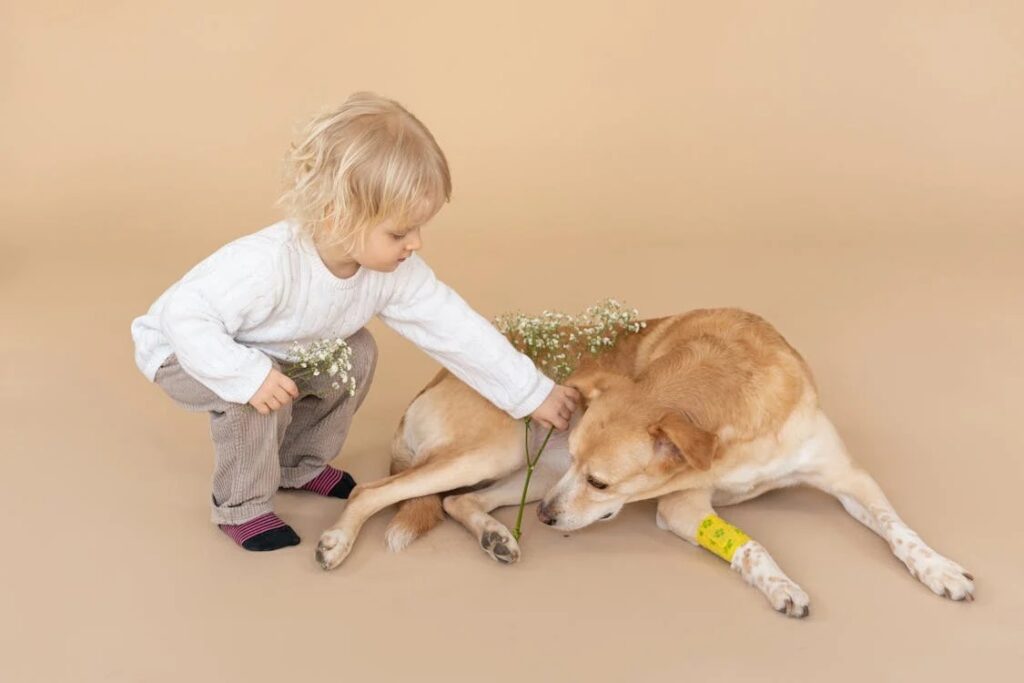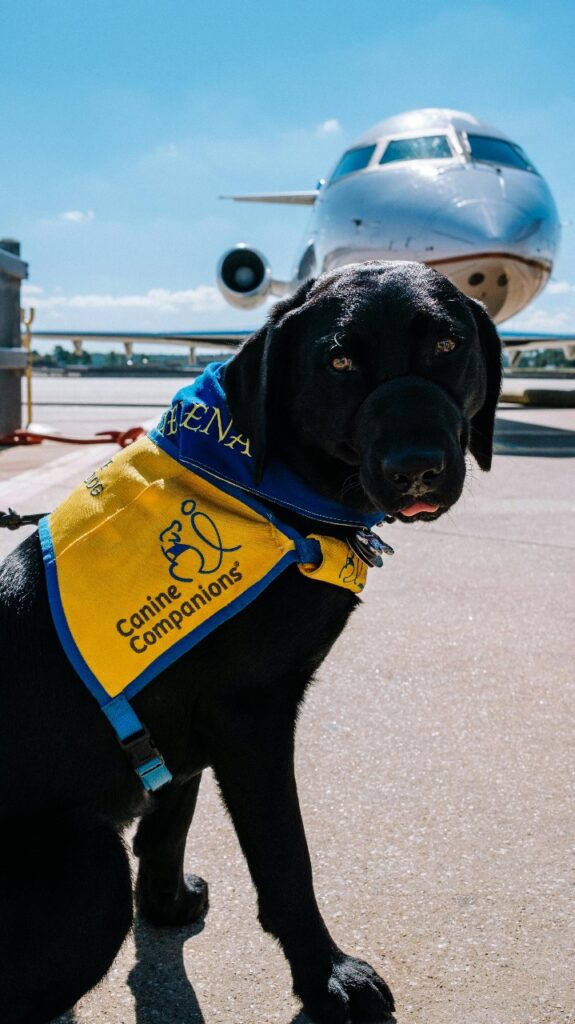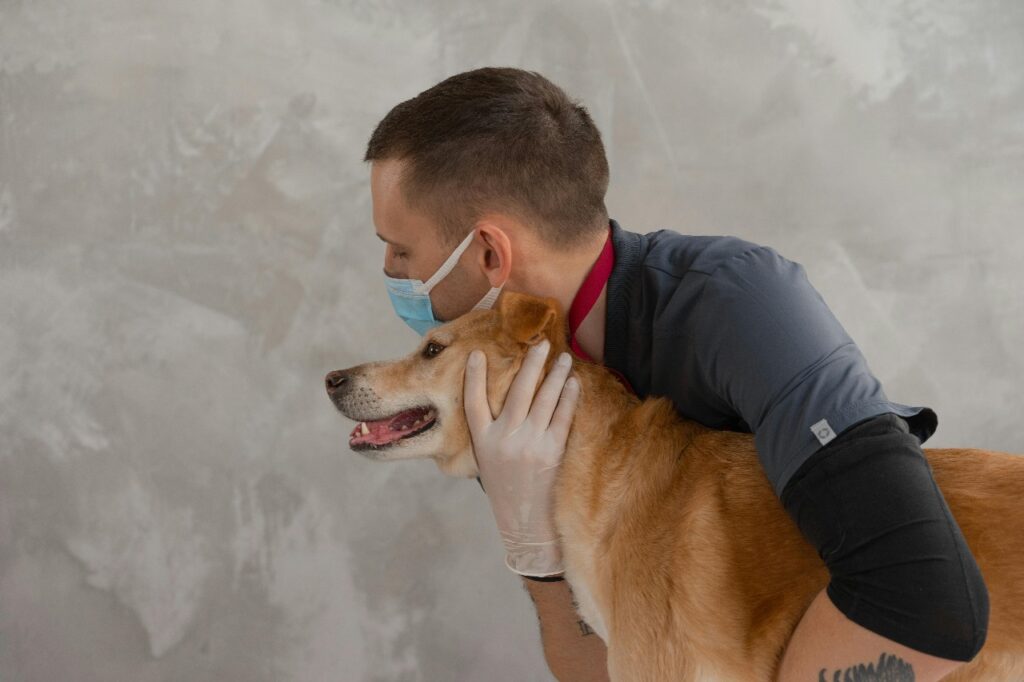
Therapy dogs provide emotional comfort, reduce stress, and bring joy to individuals in hospitals, schools, and other settings. However, not every dog has the temperament required to be an effective therapy dog. While breed and size may play a role, the most critical factors are personality traits and behavioral characteristics that ensure the dog can handle various environments, people, and situations. Let’s explore what makes a dog suitable for therapy work and how you can evaluate if your dog has what it takes.
Key Traits of a Therapy Dog
Calmness and Composure
Therapy dogs must remain calm even in chaotic or unfamiliar environments. Whether in a busy hospital or a school filled with energetic children, these dogs need to maintain their composure. Dogs that are easily startled, nervous, or overly excited may not be suitable for therapy work. A dog that is naturally relaxed and can stay focused despite distractions is more likely to excel in therapy settings.
Friendliness and Socialization
A therapy dog must enjoy interacting with people, including strangers. Dogs that are overly shy, fearful, or anxious around new people may not do well in this role. Therapy dogs need to exhibit friendliness and trust towards a wide range of individuals, including children, the elderly, or individuals with physical or mental disabilities. They must be comfortable with gentle petting, hugging, or even more intense interactions without becoming stressed.
Adaptability to Different Environments
Therapy dogs often visit a variety of settings such as hospitals, nursing homes, schools, and disaster areas. These places can have distinct noises, smells, and energy levels. A dog that can easily adjust to new environments without becoming overwhelmed is ideal for therapy work. Additionally, therapy dogs need to be comfortable on various surfaces, like slick hospital floors, outdoor areas, or tight spaces in a crowded room.
Read more: Training Your Dog to Behave at Pet-Friendly Restaurants: 6 Tips That Work
Patience and Tolerance
Patience is a critical trait for therapy dogs. They often spend long periods with individuals who may move slowly or unpredictably, such as children or patients in recovery. A therapy dog must exhibit tolerance toward behaviors like sudden movements, loud noises, or even rough handling. Dogs that are easily frustrated or reactive are less likely to be suitable for this type of work.
Obedience and Training
Basic obedience is essential for therapy dogs. They must respond well to commands and cues from their handler, even in distracting or stressful environments. Therapy dogs need to walk calmly on a leash, remain in a down or sit position for extended periods, and return to their handler when called. Additionally, therapy dogs should not exhibit aggressive behavior or jump on people, as they often work with vulnerable populations.
Assessing Your Dog’s Temperament
Before considering therapy dog certification, it’s essential to evaluate whether your dog naturally exhibits the temperament required for this role. You can observe your dog in various situations to gauge their reactions:
Does your dog remain calm when exposed to loud noises or sudden movements?
How does your dog respond to meeting new people or being touched by strangers?
Is your dog adaptable when introduced to unfamiliar environments?
It’s also helpful to participate in socialization classes or group activities to see how your dog behaves in a controlled environment with other animals and people. This will provide insight into whether your dog can maintain its composure in therapy-like settings.
Conclusion
Not every dog is suited for therapy work, but for those that possess the right temperament, it can be an incredibly rewarding experience. If your dog is calm, friendly, adaptable, and patient, they may be a great candidate for therapy dog training. However, it’s essential to honestly assess your dog’s behavior and temperament before pursuing this path, as the well-being of both the dog and the individuals they serve is paramount.
Do you own an assistance animal? Register your pet today.
The Service Animal Registry of California invites you to have your assistance animal registered in order to designate its status. We also encourage you to take our online classes so you can be fully aware of your rights and gain more knowledge about your support animal.
Finally, we present to you our book entitled, “ASSISTANCE ANIMAL LAWS: LEARN YOUR RIGHTS REGARDING SERVICE ANIMALS, EMOTIONAL SUPPORT ANIMALS, THERAPY PETS, AND OTHER DOGS, CATS, AND ASSISTANCE ANIMALS” to provide you with a complete education on assistance animals.
Purchase your copy of the book by clicking the image below.



























